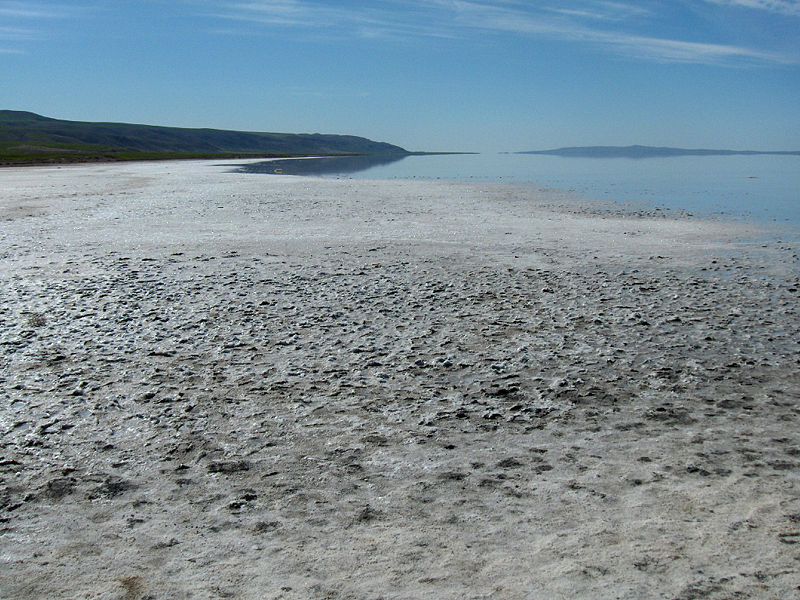Salt lakes
Dry salt lakes
The salty ground of dry salt lakes appears as intense cyan colour in the Natural Colour RGB images.
The left hand image shows the Tuz Gölü lake in central Turkey scanned by the SEVIRI instrument. The green and blue colour beam (VIS channels 0.6 and 0.8 micrometer) contribute much more than the red colour beam of the 1.6 micron NIR channel to the satellite measured radiation. In opposition to reflection from deserts and bare grounds where the near-infrared channel contribution is very intense, the salty surface shows a similar behaviour like snow and ice (i.e. an almost complete absorption of short wave solar radiation at 1.6 micrometer).
This phenomenon is visible mainly during the summer month when water evaporates and leaves the whitish sea ground (see image below).

Tuz Gölü (Central Turkey)
As the AVHRR sensor onboard NOAA and MetOp polar satellites has the same spectral channels in the visible and near IR range, this feature can also be seen on their Natural Colour RGB (see image below).

MetOp-A Natural Colour RGB for 20 June 2013 08:25 UTC
Explanation of the colours of salt lakes in the Natural Colour RGB (see the recipe):
• Radiation mesured by the SEVIRI instrument of MSG in channel 1 (0.6 micron) and channel 2 (0.8 micron) contributes much more to the Natural Colour RGB than radiation measured in channel 3 (1.6 micron). Solar radiation is strongly absorbed by salt crystals at 1.6 micrometer while it is strongly reflected in both visible channels 0.6 and 0.8 micrometer. Cyan is resulting from a mixture of blue and green.

